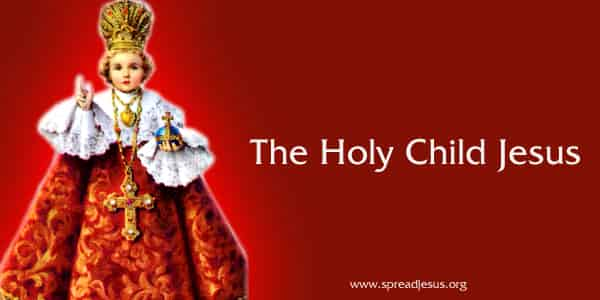Saint Aloysius Gonzaga Catholic Saint
CATHOLIC SAINTS 28-12-2023, 19:38

Saint Aloysius Gonzaga
Catholic Saint
st.Aloysius Gonzaga-Scholar and patron of youth
Feast Day :June 21
Patronage: AIDS caregivers; AIDS sufferers; Catholic youth; against eye troubles and diseases; Jesuit students; against plague; relief from pestilence; teenagers; youth
Also known as: Luigi
The eldest son of Don Ferrante Gonzaga, marquis of Castiglione, and his wife, Marta Tana Santena, was born at castle Castiglione delle Stivieri in Lombardy on March 9, 1568. The Gonzagas (reputedly known for their brutality and immorality) were the ruling family of Mantua, and Don Ferrante also held a high position at the court of King Philip II of Spain. Marta Tana served as lady-in-waiting to Philip’s queen. Don Ferrante desired his son to be a military commander, so at age four little Luigi, as the saint was called, was sent to military school. At seven Luigi felt drawn to a religious life, and at nine took a vow of chastity, never looking a woman not even his mother in the face again. In 1579, when the boy was 11, Don Ferrante placed him and his younger brother Ridolfo at the court of the duke of Mantua, who had recently appointed Don Ferrante governor of Monferrat. But appalled by the vices of court, Aloysius decided to renounce his inheritance in favor of Ridolfo, even though Aloysius had already received investiture from the emperor. About this time Aloysius contracted kidney disease, which he welcomed as a way to stay in his room and pray.
He also began practicing severe austerities: fasting every other day on bread and water, allowing no fire in his room no matter the temperature, and scourging himself. By age 12 Aloysius dreamed of being a Jesuit missionary, receiving his First Communion at Brescia from St. Charles Borromeo and filling his summer days at Castiglione by teaching the catechism to poor local boys. In 1581, Philip II summoned Don Ferrante to accompany Empress Mary of Austria on a journey from Bohemia to Spain, and the family accompanied him. Upon arrival at court, Aloysius and Ridolfo became pages in the service of the Infante, Don Diego (James), prince of the Spanish Asturias. Although duty-bound to serve Don Diego, Aloysius continued his devotions and hardened his resolve to become a Jesuit. His mother approved his decision, but Don Ferrante adamantly opposed it by any means possible: threats of beatings, tempting the boy with the pleasures of the northern Italian courts, sending him on diplomatic missions all over Europe. When Don Diego died in 1584 and Aloysius and Ridolfo returned to Castiglione, Aloysius again pressed his case and his father relented, but only after an imperial commission officially transferred the succession to Ridolfo. Aloysius joined the Jesuit novitiate house of Sant’ Andrea in Rome on November 25, 1585. The Jesuits curbed his austerities, ordering him to eat and take recreation, and sent him to Milan.
While praying one morning, Aloysius received a vision telling him he had not long to live, a revelation that filled him with joy. He returned to Rome and was professed in 1587. In 1591 plague struck the city, and Aloysius begged to serve in the Jesuit hospital, tending patients and performing menial tasks. He caught the plague but miraculously recovered. But then Aloysius contracted a fever that severely weakened him for three months. Unable to work, he would nevertheless arise at night and worship before his crucifix and kiss his sacred pictures, then kneel in prayer propped between his bed and wall. He asked his confessor, St. Robert Bellarmine, whether it was possible to go straight to heaven without passing through purgatory, and St. Robert replied that he believed someone like Aloysius could hope for such grace. Aloysius immediately fell into an ecstatic state and revealed that he would die on the octave of Corpus Christi. When the octave arrived on June 20, Aloysius seemed so much improved that the rector talked of sending him on a trip, but Aloysius maintained he was dying and requested the viaticum in the evening. After receiving the last rites, Aloysius lay very still, occasionally saying, “into Thy hands,” and appeared to ebb away between 10:00 p.m. and 11:00 p.m. With Jesus’ name on his lips, Aloysius died about midnight of June 20–21, 1589, at age 23. St. Robert Bellarmine testified that Aloysius had never committed a mortal sin and through his Jesuit service had developed total devotion to God and man. Aloysius is buried under the altar in the Lancellotti Chapel at the Church of St. Ignatius in Rome. Pope Benedict XIII (r. 1724–1730) named Aloysius the patron of young students in 1729, and Pius XI later designated him the patron of all Christian youth.
.jpg)
The Gospel According to Mark Chapter 6:1-56 Mark 6:1 He departed from there and came to his native place,...
Learn more.jpg)
The Gospel According to Matthew Chapter 24:1-51 Matthew 24:1 Jesus left the temple area and was going away,...
Learn more
The Book of Ecclesiastes Chapter-1 Ecclesiastes 1:1 The words of Ecclesiastes, the son of David, the king of...
Learn more


